Memories and Contributions
If you have any memories or contributions to share, please use the Contact Form at the bottom on the page. Apologies to anyone who tried to email through the old link on this page.
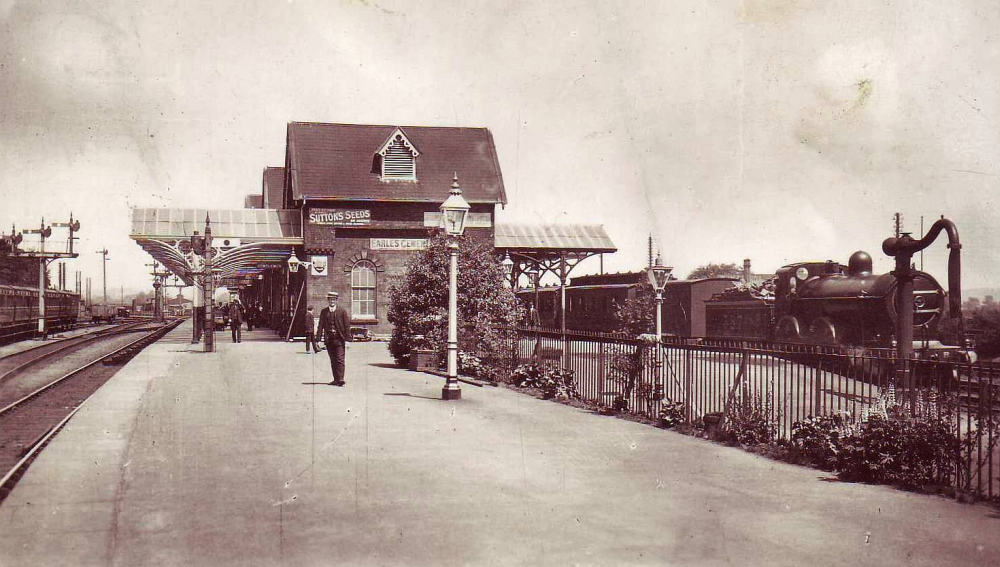
John Townsend telephoned to say that he was a junior porter at Trent Station from Easter 1944 to October 1947. He remembers the tom cat left by the troops returning from Dunkirk, which had been brought back from the beaches.
The cat was taken in by Miss Lewis, who was in charge of the refreshment room. John would be 14 or 15 when he went to Trent. There were four or five cats at the station.
John had one of the kittens sired by the Dunkirk cat. John remembers Jack Cope, shunter, who taught him photography and Norman Dean, and also Ernest Mee from Trent North signal box. John’s brother also worked at Trent.
Mystery Sign. Railway sign collector Brian Amos (many of whose photographs are in the book) has in his collection an unusual Trent Station sign which is something of a mystery.
As can be seen, it is in the lozenge shape of ‘totem’ signs used by British Railways in the 1950s.
Although the fixing holes show signs of screws being applied it was probably never fitted at Trent. It may have been a design exercise that was never carried forward – but perhaps a reader can shed further light on this mystery.
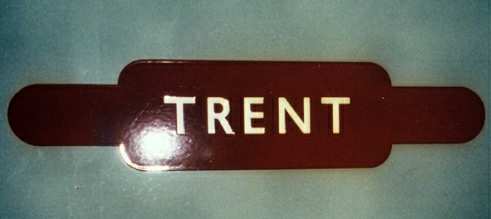
Anthony S. Taylor gives some information about the location of a sign to Trent Station, pictured in the book. The location of the sign, now in a private collection, had not previously been satisfactorily identified.
“I recently received a copy of Last Train from Trent Station for my birthday and, as anticipated, it is a delight! Born in 1940, my trainspotting days began about nine years later when, arme with my Ian Allan ABC, I joined the happy crowd of lads who rushed down the path to Trent on Saturdays and school holidays sometimes being told off by a policeman if we had dared to cycle on the path).
Certainly the Long Eaton area was a wonderful place for railways in those days, though it was always frustrating to be at Trent and see the Derby-London expresses go by on the “Bunker” – too far away to get the number (or name, for the engine would usually be a ‘Jubilee’).
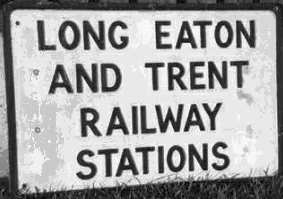
John Petley, author of ‘Southern Loco-Hauled Finale’, has pointed out that the diesel locomotive on page 66 is wrongly identified as a Peak 45. “Although all 193 Peaks were virtually identical”, he writes, “there were actually three classes of Peak, 44, 45 and 46, and the number of this particular loco was in the class 46 series”.
Adrian Burrows, of Breaston, found this photograph when he was clearing out some old material at his home. He thinks it may be of a distant relative.
The gentleman pictured is sharply in focus, which means that the details of the Trent Station down platform behind are out of focus, though the clock clearly shows the time as 1.50 p.m. The only clue to the date of the photograph is a pencilled ‘1889’ on the supporting cardboard surround.
Is there anyone who is an expert in Midland Railway uniforms who could corroborate this?
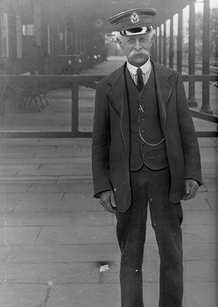
Toby Clempson responded to the above question “According to David Froggatt’s book “Railway Badges Buttons and Uniforms” (really the only authoritative source on the subject) the cap badge in this photograph is definitely identified as being that of a Midland Railway Senior Inspector, there is a good illustration of the badge in plate 12. Contrary to the date marked on the photograph’s mount, he also states that until 1905 both senior and junior MR inspectors were issued with frock coats. In addition, MR senior grades were issued with caps which didn’t have a wide military style crown like the one if the photograph, they were neat, straight-sided peaked pill box shaped caps.
I suggest that this is a photograph of a Midland Railway Senior Inspector but that it dates from c1920 just before the Midland Railway became part of the LMSR. The design of jacket and cap certainly suggest this sort of date rather than before 1900″.
St Pancras Clock
Retired railwayman Roland Hoggard bought the two station clocks from Trent Station after the station’s closure in 1968, but he sold those on to a Mr Turner. We are still trying to trace what has happened to them since.
The parts of another old clock were rescued by Roland Hoggard in 1968 after it was dropped while being taken down by British Rail workmen. Roland, who retired to Thurgarton, Nottinghamshire, was a well-known collector of railway clocks. It took him 18 months to piece the original clock together. His work served as a blueprint for the replica Midland Railway clock which now dominates the refurbished St Pancras International station in London.
‘The Ghost Train’
Alan Galinski sent some further information about the play ‘The Ghost Train’. Arnold Ridley wrote this play after being stranded one freezing night at Mangotsfield, a junction in the suburbs of Bristol for trains to Bath and Bournemouth. The station is now closed, but the Bristol to Bath cycle path passes the site.
Alan bought tickets 2861 and 2862 for the last train from Trent Station. Author Geoffrey Kingscott believes that his ticket, number 2865, was the last one issued.
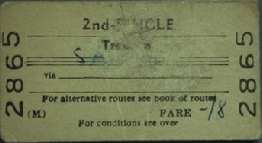
Arnold Ridley (1896-1984) served in both World Wars. Between the wars he was mainly a playwrite. After WW2 he spent more time acting and is probably best remembered for playing Private Godfrey in Dad’s Army
Mangotsfield Station, like Trent, was an interchange station. And, like Trent, it had extensive glass canopies as shown by this photograph (copyright, not to be reproduced), taken in 1950 by H.C. Casserley.
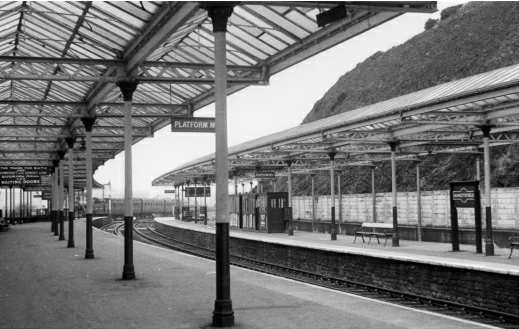
Kirtley and Johnson
John Petley comments: “On page 39 of the book you say that S.W. Johnson succeeded the ‘even more famous’ Matthew Kirtley. Personally, I would have said that Johnson was the more famous, although I would not claim to be sufficiently expert on the Midland Railway to make a categorical statement to that effect.” John also points out that on page 26 of the book there is reference to “British Rail 2-10-0 locomotive 92059”. While this is correct, these are universally known as the 9F class.
Ralph Gee remembers
Ralph Gee writes to say he may have been the cricket team member who jokingly shouted to a porter whether they were on the right train for Carlisle (an anecdote by Stephen Best recounted on page 57 of the book). Ralph was Chief Librarian of the Nottingham Evening Post from 1984-1992.
“Before my time”, he writes, “the loss of archived material was endemic, but having been appointed by the Managing Director, Christopher Pole-Carew, I had greater authority over journalists than had my predecessor, while giving my staff far fuller discretion and responsibilities than hitherto. With that went pride in protecting our collection. Regrettably ‘PC’ was dismissed, and in my time my authority lessened until I too was shown the door (in fact I was frog-marched to it). The staff-trimmed paper was then sold to the Daily Mail. As a railway buff myself, I’m sure that in my time I’d have found something useful to you in the files”.
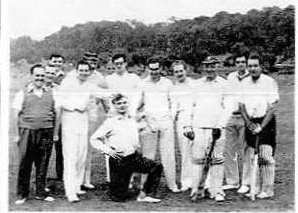
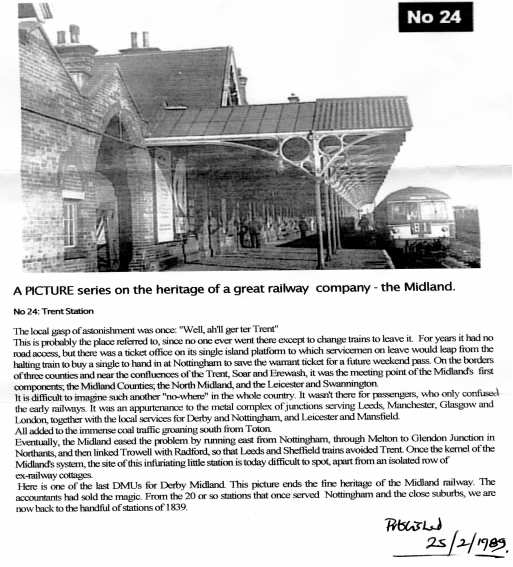
“I was delighted to see your reference to my old colleague, Stephen Best, and enclose a very relevant photo of us and that very cricket team that struggled back from Sutton Bonington on which there are two subsequent county Chief Librarians, of Dorset (and later Gloucester) and Derbyshire. In fact eight are all (or became) fully chartered librarians!” Mr Gee also found an article which he had written about Trent Station for the Nottingham Evening Post in 1989, and which included a last-day picture.
This was the final article in a 24-part series on the “The Midland Heritage”, one of many contributions Ralph Gee made to local history. The article brought forth a letter from a C. Wilkinson, of Long Eaton, who wrote: “I would like to speak out for Trent Station, featured in your Midland Heritage on February 25, and for a lot of staff who worked there some 40 to 50 years ago. Contrary to your article, Trent was an exceptionally busy station. The booking hall was closed before the end of the afternoon shift, and many servicemen returning to Chilwell would palm off things such as weighing-machine tickets and pieces of card to the duty platform porter. The station had a subway to the platforms, and very good road access – a road which also saw the passage of troops to the adjacent rifle range. Access from Long Eaton was by footpath. A familiar site was the many nuns walking on the path to the nearby nunnery.
Sheet Stores Crane
David Bartropp of Long Eaton recalls when there was a crane which stood at the Sheet Stores site, on the opposite side of the basin. It might have been an original fitting; it was certainly 19th century. But it went for scrap. David has now obtained a similar crane, 1 feet high, dating back to 1870, from the former Gretton station, and has restored it. He is wondering whether the Gretton crane would make a fine heritage landmark if it could be installed in the place once occupied by the old crane.
First Aid
Steve Shaw recalls Trent Station from his engine-numbering days. Incidentally, we never called it “train-spotting”; it was always (and much more accurately) engine-numbering. “My friends and I”, Steve writes, “were in the habit of playing cricket on the piece of ground bounded by ‘Black Pad’, the North Curve, and the Erewash Valley line, while awaiting the next train. This was well in sight of the North Junction signal box, but I do not ever recall being told to ‘Clear off’. None of us ever got run over by a train, even though we retrieved long hits off the tracks! Can you imagine that, nowadays? Health and Safety and the Railway Police would go berserk!
“But one hot summer holiday, when diving for a catch, I landed on a sharp piece of wood and gashed my leg open very badly indeed. No-one had any sort of first aid, so I was carried on to the station, almost literally in a faint, where a kindly railwayman raided the ‘official’ first aid kit and bound me up very well indeed, and gave me a drink of his tea (it was foul!). The injury was serious enough to prevent me from cycling or walking the 2½ miles back home in Long Eaton, so I (with my bike) was taken down the steps and under the tunnel, and put on board the next BR workman’s bus (I think they brought staff from perhaps Toton, I’m not sure) and I was driven home in style! Doctor, stitches, tea and sympathy put things to rights and the match continued the following week. I still have the scar 55 years later!
“Oh! How I bitterly regret throwing away my Ian Allen Combined Volume with all those red underlinings. Years of ‘hard work’ destroyed in an instant!!”
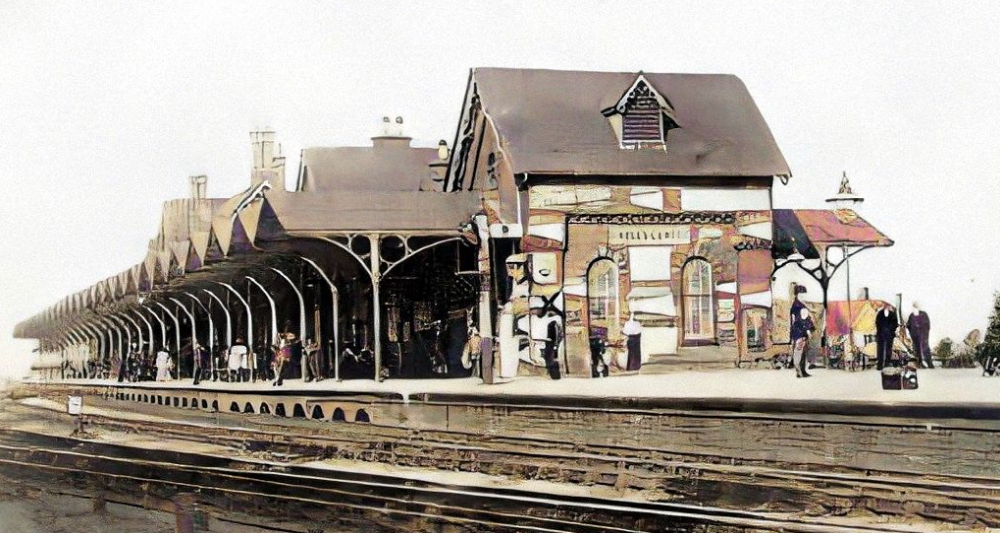
Drawings saved
Some 40 years ago Gordon Bowley, of Borrowash, rescued from a skip near Derby stations some survey plans and machinery drawings relating to Trent Sheet and Sack Works and Trent Station. These include an 1884 plan for the foundation of a 46-foot turntable to replace a 40-foot turntable, an 1862 design for the tank house at the Gas Works, a 1900 plan of the new Sheet Shop at the Sheet and Sack Works, a 1930 plan of a drive mechanism for the sack sewing machines, the 1911 layout of Trent Station and lines to the east of it, and an 1899 overall plan of the Sheet and Sack Works to show the fire mains.
A Search for a Photograph
On page 94 of Last Train from Trent Station we mention an incident at Mansfield station. In 1964 booking clerk John Meade sold the last ticket there before the station closed. When the station was re-opened on February 2, 2001, as part of the Robin Hood Line, John Meade was brought out of retirement for one day, the sell the first ticket from the refurbished station. John Meade has since died, but his son David Meade is looking for a particular photograph.
“Unfortunately”, he writes, “I do not have the title or subject of the book. A number of years ago, my parents were visiting Clumber Park in Nottinghamshire, and came across a book that contained a photograph of Mansfield Midland Station. This photograph was of particular interest to my father as his Vespa scooter was shown in the photograph. For reasons unknown, my father decided to buy the book later, but, unfortunately, it was no longer at the shop on his return. With the passing of my father, my mother mentioned that it would be nice to track the photograph down. It has proved more difficult than I expected! All I am certain of is that the photograph had to originate from the period 1957-1964.”
